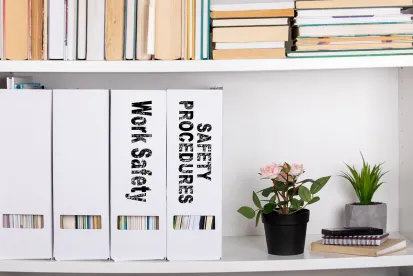OSHA previously issued guidance on preparing workplaces for COVID-19, which we covered on the blog a few weeks ago. The agency has been busy issuing additional materials to guide employers through these uncharted waters. A few recent developments are summarized below:
Recordkeeping and Reporting Requirements
OSHA has confirmed that COVID-19 can be a recordable work-related illness that must be documented on an employer’s OSHA 300 log in certain circumstances. OSHA advised employers to consider the following three factors in making that determination:
1. The case is a confirmed case of COVID-19,
OSHA advised employers to consult CDC guidelines to determine whether a case is considered confirmed, but for the purpose of recording requirements, an employee must have a positive, laboratory-confirmed case of COVID-19.
2. The case is work-related, as defined by 29 CFR 1904.5; and
This question is likely to be the most difficult one for an employer to answer. OSHA has discussed a number of things employers should consider as they attempt to identify potential sources of exposure. According to OSHA, employers should rely on identification of employees with symptoms of COVID-19 and/or a history of travel to heavily impacted areas. Employers should also consider whether employees may encounter someone infected with COVID-19 in the course of their duties. OSHA’s previously issued guidance on preparing workplaces for COVID-19 may help employers as they navigate this question.
3. The case involves one or more of the general recording criteria set forth in 29 CFR 1904.7 (e.g., medical treatment beyond first-aid, days away from work).
Finally, it is important to note that, if an employer determines that a confirmed case of COVID-19 is work-related, any in-patient hospitalization or death is reportable to OSHA in accordance with 29 CFR 1904.39.
Respiratory Protection Guidance
OSHA has issued a number of guidance documents in light of the current shortage of certain personal protective equipment, namely, respirators. A few weeks ago, OSHA issued temporary enforcement guidance on respiratory protection fit testing requirements for healthcare employers. The purpose of the guidance was to ensure that respirators are being used where they are needed most. Yesterday, it expanded that guidance to apply to all workplaces where the use of respirators is required. The guidance provides that OSHA will “exercise enforcement discretion” regarding the annual-fit testing requirements as long as employers:
-
Make a good-faith effort to comply,
-
Use only NIOSH-certified respirators,
-
Implement CDC and OSHA strategies for optimizing the supply of N95 filtering respirators and prioritizing their use,
-
Perform initial fit tests for each employee with the same model, style, and size respirator that the employee will be required to wear for protection against COVID-19,
-
Inform workers that the employer is temporarily suspending the annual fit testing of N95 filtering respirators to preserve and prioritize the supply of those respirators for use in situations where they are required to be worn,
-
Explain to employees the importance of performing a user seal check each time a respirator is worn,
-
Conduct a fit test if the employer observes visual changes in an employee’s physical appearance that could affect respirator fit, such as changes in body weight or facial scarring, and
-
Remind employees that they should inform their supervisor if the integrity and/or fit of their N95 filtering respirator is compromised.
Given the shortage of respirators, OSHA has also indicated that it will exercise additional enforcement discretion if an employer switches to an equivalent-fitting make, model, size, or style filtering respirator without first performing an initial fit test. OSHA reminded employers that most respirator manufacturers produce multiple models in the same or similar sizes and encouraged employers to consult with those manufacturers to find a suitable alternative in the event of a shortage.
OSHA also issued additional enforcement guidance specific to the potential for respirator shortages. This guidance states that, in the event that extended use or reuse of N95 filtering respirators becomes necessary, the same worker may reuse his or her respirator so long as the respirator maintains its structural and functional integrity and the filter material is not damaged, soiled, or contaminated (for example, with blood, oil, or paint). However, employers must address the circumstances under which a respirator will be considered contaminated in its Respiratory Protection Program. OSHA’s guidance further notes a preference for extended use as opposed to reuse due to the risk or contact transmission. OSHA will also exercise enforcement discretion with regard to the use of expired N95 filtering respirators in certain situations and subject to testing requirements, so long as the employer has made a good faith effort to acquire other respirators.



 />i
/>i

